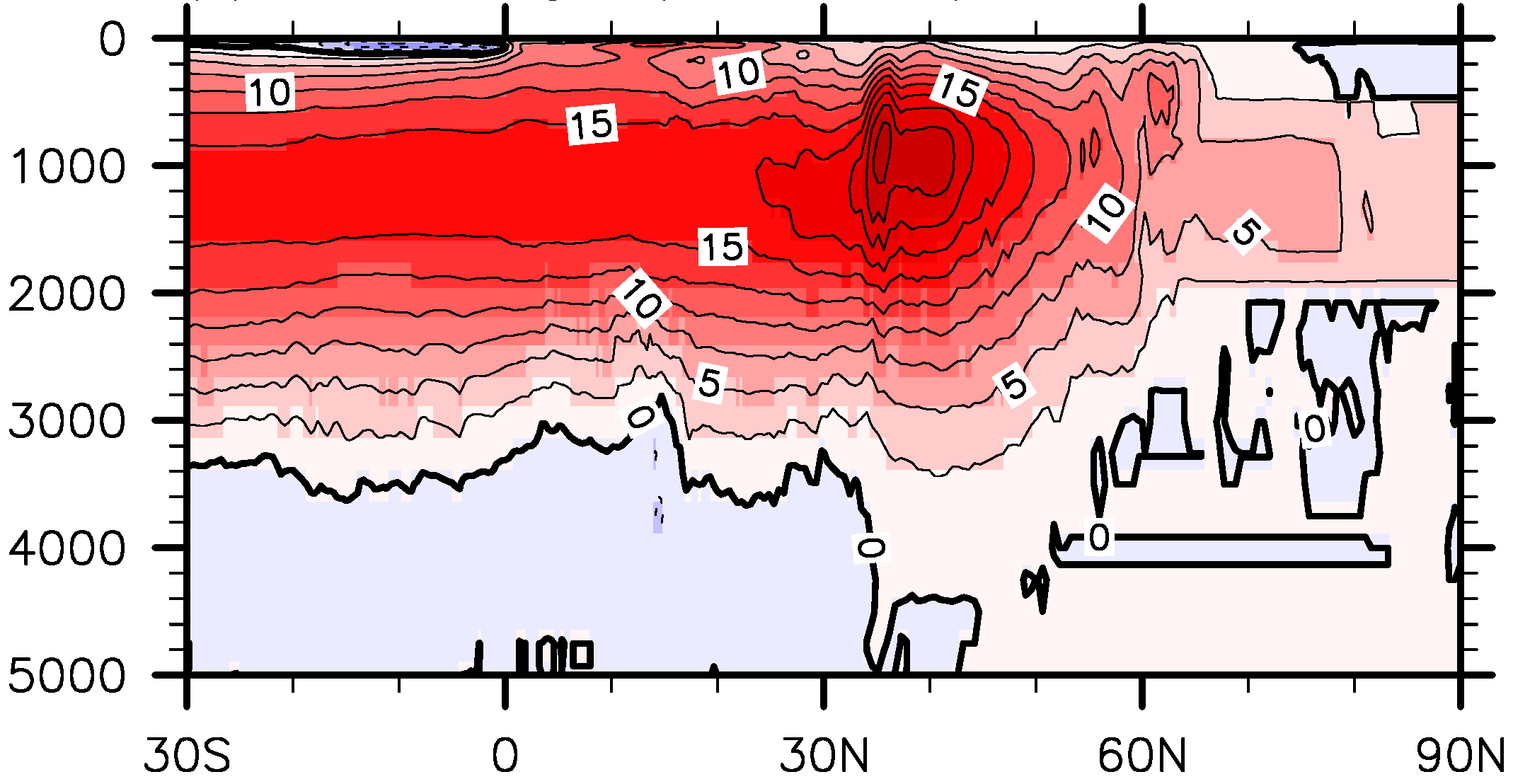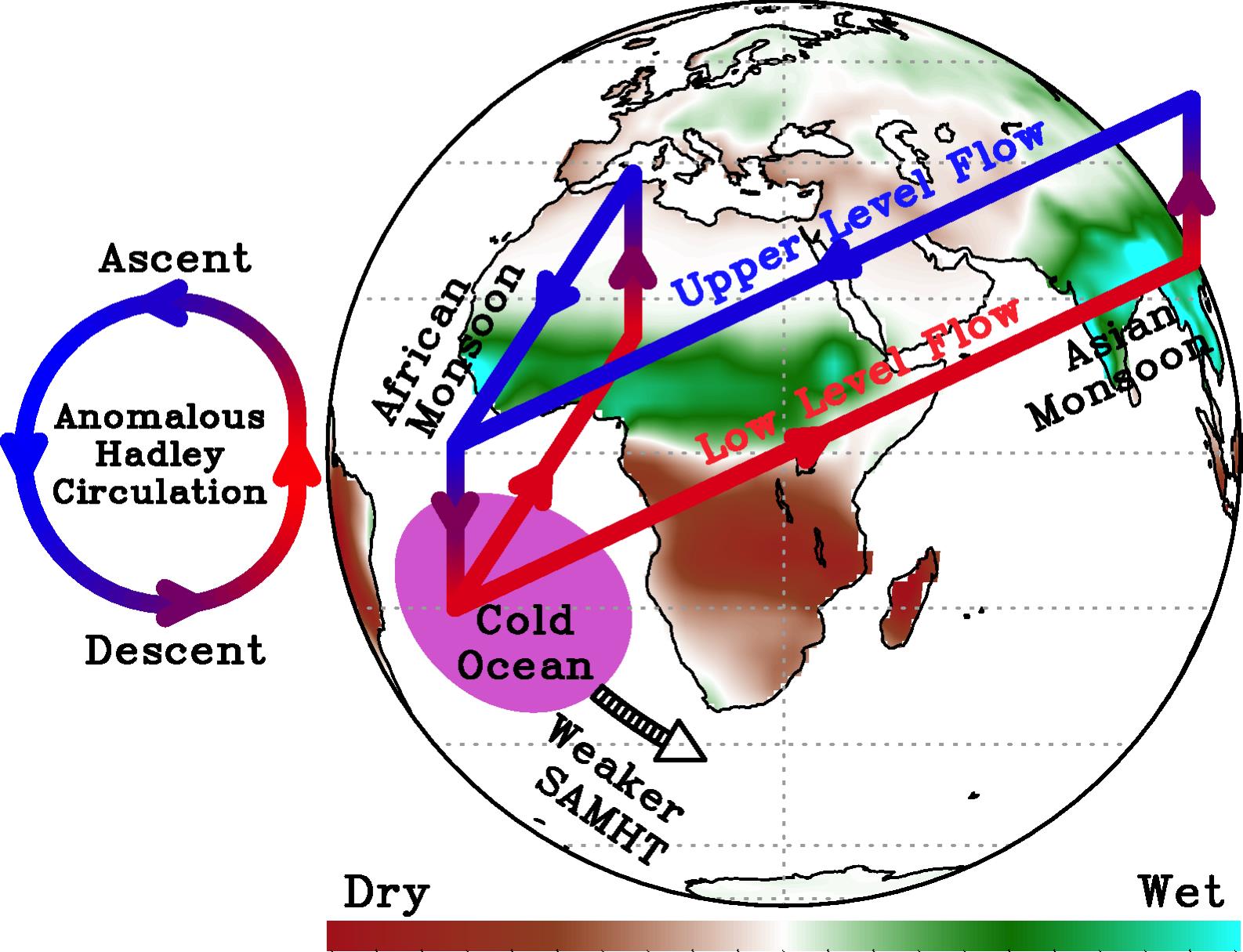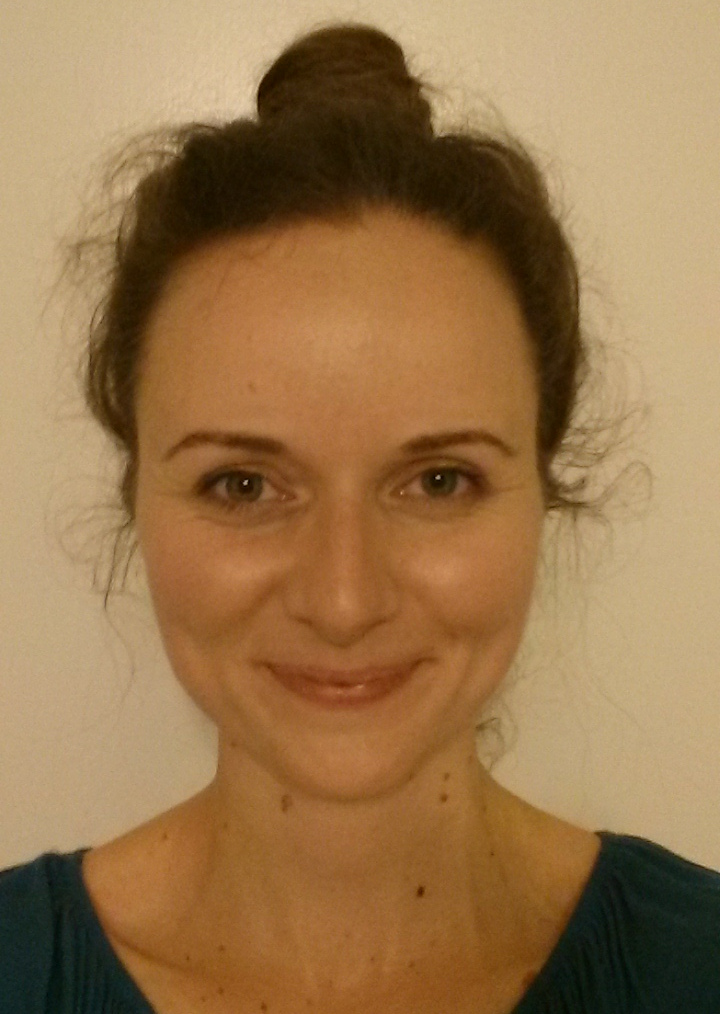Atlantic Meridional Overturning Circulation and Its Impact on Global Monsoons and Extreme Weather Events
Introduction
The Atlantic Meridional Overturning Circulation (AMOC) is characterized by northward flowing warm and salty water
in the upper layer of the Atlantic Ocean, deep convection in the Nordic and Labrador Seas, and southward
flowing colder water at depth. This circulation transports heat from the South Atlantic and tropical North Atlantic
to the subpolar and polar North Atlantic, a region characterized by net cooling and freshening of the water at higher
northern latitudes of the Atlantic in the Nordic and Labrador Seas, where the heat is released to the atmosphere
with substantial impacts on climate. Funded by Climate Program Office (CPO) of NOAA, this project aims to advance
our understanding of the mean pathways and variability of the AMOC and their link to global monsoons and
extreme weather events. Three specific goals are to better understand and describe (1) the southward pathways of the
upper and lower North Atlantic Deep Water, (2) interannual-to-decadal variability of the South Atlantic MOC
(SAMOC), and (3) decadal modulations of global monsoons and US heat waves by SAMOC.
News and Highlights
Dr. Alexandra Gronholz, a recent graduate from University of Bremen in Germany, joined our team as a postdoc
in April, 2017. She will use the Modular Ocean Model version 6 to study the variability of the meridional overturning
circulation in the South Atlantic and its link to the eddy processes. Her research will directly contribute to
NOAA’s long-term goal and objective, Climate Adaptation and Mitigation - Improved scientific understanding of
the changing climate system and its impacts. Welcome aboard Alexandra!
Southward Pathways of the Upper and Lower North Atlantic Deep Water

The Atlantic Meridional Overturning Circulation (AMOC) transports the upper warm water northward and
the deep cold water southward in the Atlantic, and is a key component of the global energy balance.
In many of the climate models that participate the Coupled Model Inter-comparison Project Phase 5 (CMIP5),
the amplitudes of the AMOC agree very well with or are even larger than the observed value of about
18 Sv at 26.5°N; but they still show cold upper ocean temperature biases in the North Atlantic. This
suggests that the AMOC strength may not be the only factor that determines the meridional ocean heat
transport. A common symptom in these models is that the returning flow of the AMOC at depth is too
shallow. A shallow returning flow would carry excessive heat southward; thus the net northward heat
transport by the AMOC would be weaker than the observed. We will present quantitative analysis that
supports the above hypothesis using available observations, CMIP5 model outputs, and ocean and sea-ice
model experiments.
Interannual-to-Decadal Variability of the SAMOC

Recent studies have suggested the possibility of the southern origin of the Atlantic MHT anomalies. These
studies have used General Circulation Models (GCMs) to demonstrate covariability between the South Atlantic MOC
(SAMOC) and the Southern Hemisphere westerlies at interannual to longer time scales. However, it has been
pointed out that the sensitivity of the SAMOC to the changes in the Southern Hemisphere westerlies depends
critically on the representation of mesoscale eddies in those models. The observation-based estimates of MHT
in the South Atlantic have a wide range of values, which, to some extent, is due to the misrepresentation of
the eddy heat transport. Therefore, understanding the variability of the MOC/MHT in the South Atlantic on
various time scales and the role of eddies in the South Atlantic are essential ingredients toward achieving
decadal predictability of the AMOC and its impact on climate. In our continued effort to diagnose the
performance of climate models in the South Atlantic and to better understand the role of eddies, we will
(1) diagnose and characterize interannual to decadal variability of the SAMOC in CMIP5 models, (2) explore
the impact of resolving eddies in ocean GCMs on interannual to decadal variability of the simulated SAMOC,
and (3) quantify the relationship of the SAMOC with the Southern Hemisphere westerlies and the Agulhas
leakage.
Decadal Modulations of Global Monsoons and Extreme Weather Events by SAMOC

There have been many efforts to understand the role of the Atlantic Meridional Overturning Circulation (AMOC)
as a potential predictor of decadal climate variability, motivated partly by its inherent relationship with
North Atlantic sea surface temperature. In contrast, there is currently limited knowledge about the underlying
mechanisms that govern the South Atlantic Meridional Overturning Circulation (SAMOC) variability and how it might
feedback into climate, partly due to the small number of direct observations in this ocean basin. Therefore,
the majority of efforts to understand the dynamics of the AMOC and its climate impacts are focused on the North
Atlantic. Nevertheless, the South Atlantic Ocean plays a key role in the global distribution of energy and is
characterized by complex and unique ocean dynamic processes. For example, the Brazil-Malvinas Confluence and
the Agulhas leakage play critical roles in the exchange of water masses. These potentially modify the long-term
response of the SAMOC that could impact global atmospheric circulation, precipitation, and climate. For example,
it is hypothesized that decadal variations of SAMOC could modulate the strength of global monsoons with 15 - 20
years of lead-time, suggesting that SAMOC is a potential predictor of global monsoon variability. We will present
quantitative analysis that supports the above hypothesis.
Publications
Dong, S., S.L. Garzoli, and M.O. Baringer, 2011:
The role of inter-ocean exchanges on decadal variations of the northward heat transport in the South Atlantic.
J. Phys. Oceanogr., 41, 1498-1511.
Goes, M., I. Wainer, N. Signorelli, 2014:
Investigation of the causes of historical changes in the sub-surface salinity minimum of the South Atlantic.
J. Geophys. Res. Oceans, 119, 5654-5675, doi: 10.1002/2014JC009812.
Lee, S.-K., D. Volkov, H. Lopez, W. G. Cheon, A. L. Gordon, Y. Liu, and R. Wanninkhof, 2017:
Wind-driven ocean dynamics impact on the contrasting sea-ice trends around West Antarctica.
J. Geophys. Res., doi:10.1002/2016JC012416.
Lee, S.-K., W. Park, E. van Sebille, M. O. Baringer, C. Wang, D. B. Enfield, S. Yeager and B. P. Kirtman, 2011:
What caused the significant increase in Atlantic ocean heat content since the mid-20th century?
Geophys. Res. Lett., 38, L17607, doi:10.1029/2011GL048856.
[highlighted in Oct. 6, 2011 issue of Nature as Community Choice]
Lee, S.-K. and C. Wang, 2010:
Delayed advective oscillation of the Atlantic thermohaline circulation.
J. Climate, 23, 1254-1261.
Liu, Y., S.-K. Lee, D. B. Enfield, B. A. Muhling, J. T. Lamkin, F. Muller-Karger and M. A. Roffer, 2015:
Potential impact of climate change on the Intra-Americas Seas: Part-1. A dynamic downscaling of the CMIP5 model projections.
J. Marine Syst., 148, 56-69, doi:10.1016/j.jmarsys.2015.01.007.
Lopez, H., G. Goni and S. Dong, 2016:
A reconstructed South Atlantic Meridional Overturning Circulation time series since 1870.
Geophys. Res. Lett., doi:10.1002/2017GL073227.
Lopez, H., S. Dong, S.-K. Lee and G. Goni, 2016:
Decadal modulations of interhemispheric global atmospheric circulations and monsoons by the South Atlantic Meridional Overturning Circulation.
J. Climate, 29, 1831-1851, doi:http://dx.doi.org/10.1175/JCLI-D-15-0491.1.
Lopez, H., S. Dong, S.-K. Lee and E. Campos, 2016:
Remote influence of Interdecadal Pacific Oscillation on the South Atlantic Meridional Overturning Circulation variability.
Geophys. Res. Lett., 43, 8250-8258, doi:10.1002/2016GL069067.
Wang, C., L. Zhang, S.-K. Lee, L. Wu and C. R. Mechoso, 2014:
A global perspective on CMIP5 climate model biases.
Nature Clim. Change, 4, 201-205, doi:10.1038/nclimate2118.



